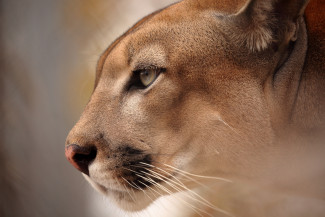
Johns Hopkins UniversityEst. 1876
America’s First Research University
Mountain Lions of the Black Hills

Writing the book, “Mountain lions of the Black Hills: History and Ecology” was a great experience that allowed me to pull together aspects of research projects that my students and I conducted from the late 1990’s to about 2014. During that period, graduate students working under my direction and in close association with biologists of the South Dakota Department of Game, Fish and Parks radio collared over 300 mountain lions for the purpose of answering a variety of questions about the species. The information gained was critically important to the successful management of the species. These were amazing experiences that allowed us to learn much about the species as we addressed these questions and objectives.
The experience of getting up close and personal to immobilized lions while we collected biological information was facinating. Even the thought of encountering marked mountain lions when out in the field was an exhilarating experience. Yet, these short-term projects missed long-term patterns that became evident when I linked data and observations collected over the duration of our work on the species for the book. Weaving these studies of the species together over for such a long period allowed me to envision how a large predator species, like mountain lions, can adapt to a new environment as it increases from just a few lions to what we termed, a “saturated” population. For example, we expected that once the population increased to maximize consumption of its preferred prey, in this case porcupines and mule deer, it would stabilize or decline. However, it was though these lions then learned new skills that allowed them to take advantage of alternative prey, in this case, domestic cats and dogs, and later, white-tailed deer and elk. These later species likely were not encountered by the lions that originally colonized the Black Hills region (those mountain lions came from further west where species like white-tailed deer were lower in abundance compared to mule deer) or at least they weren’t the primary prey of these original individuals.

So, when there were only a few lions in the Black Hills, there likely were plenty of “easy” or familiar prey available to meet the needs of those first individuals. However, the Black Hills region is populated by what might be termed, a smorgasbord of potential prey species providing alternative foods for an opportunistic predator, like the mountain lion. Information on major prey items that we collected on mountain lions moving east from the Black Hills provided additional evidence on the opportunistic activities of this species and helped us understand how it could move across large expanses of territory as it traveled to Minnesota, Nebraska, Oklahoma, Wisconsin, and even as far east as Connecticut. The future of mountain lions in the Black Hills is dependent no only on the species need to obtain food and for there to be available habitat and resources for it to reproduce itself, but also on its relationship to the people of the Black Hills region and elsewhere, and how people perceive a large carnivore that at any time could be as close to them as their own front yard. I believe information contained in the book will help in this regard.
Jonathan A. Jenks is a Distinguished Professor of Natural Resource Management at South Dakota State University. He is the editor of Managing Cougars in North America. He is also author of Mountain Lions of the Black Hills: History and Ecology